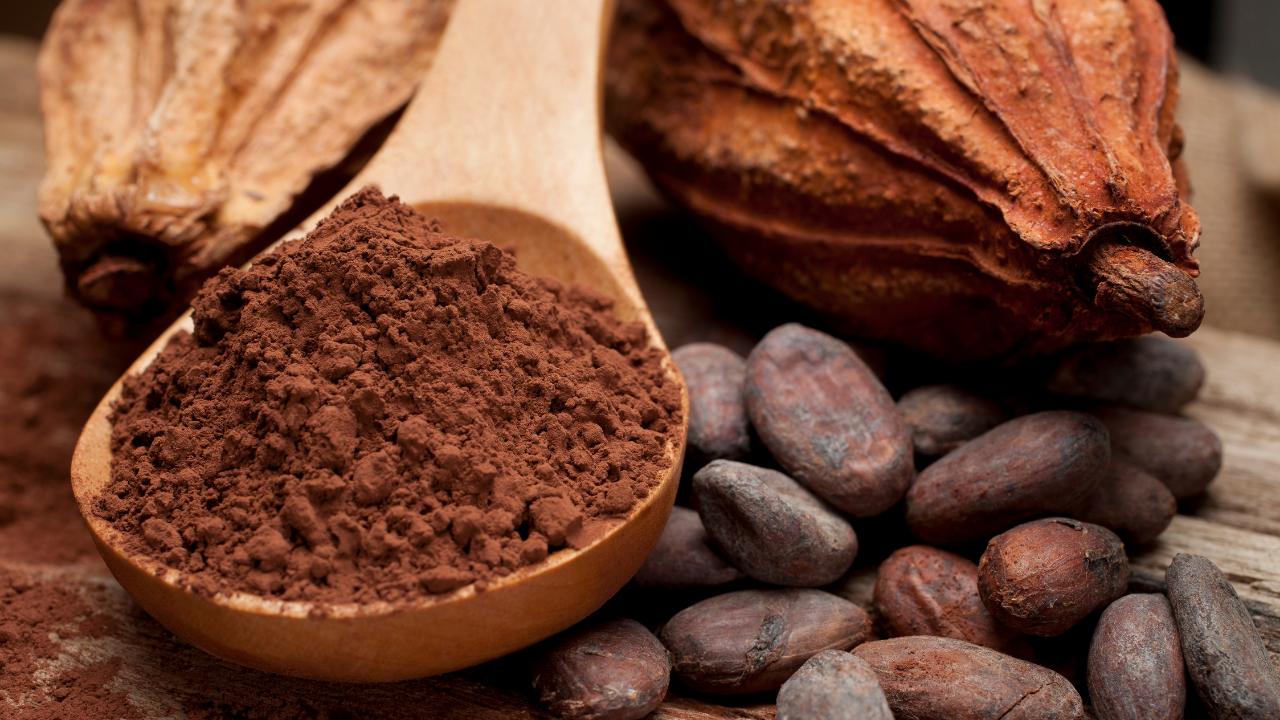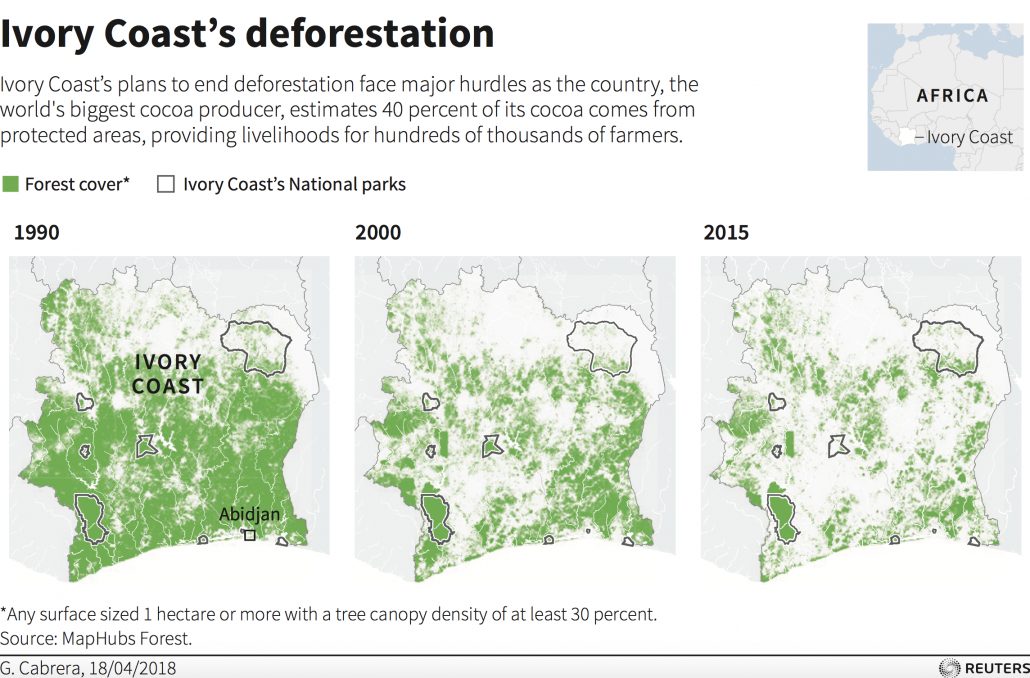WORLD CHOCOLATE DAY: HOW DOES COCOA FARMING CAUSE DEFORESTATION?
By: IAAS Secretariat- Chloe
Today is World Chocolate Day. It is celebrated internationally every year on 7th July. This may be a good time for us to reflect on the chocolate’s impact on the environment.
3 FACTS ABOUT COCOA BEAN PRODUCTION:
- About 70 percent of the world’s cocoa beans are come from West African countries: Ivory Coast, Ghana, Nigeria and Cameroon.
- The Ivory Coast and Ghana are by far the two largest producers of cocoa, accounting for more than 50 percent of the world’s cocoa.
- Cocoa trees need to be planted next to tall trees in order to protect them from direct sunlight. That is why you often see them planted amongst mango and papaya trees.
Especially in West Africa’s countries such as Ghana, Nigeria, Cameroon, and Côte d’Ivoire but also in Latin America and Southeast Asia, cocoa is linked to incredibly high rates of deforestation and biodiversity loss. and what are countries doing about it?
COCOA: MONOCROPPING SYSTEM
Much of today’s cocoa is grown in monocropping systems – an agricultural practice where a field is used to produce pure stands of one crop only.
This controversial technique is infamously known for reducing the availability of certain nutrients and degrading the soil, thus disrupting food systems. Furthermore, monoculture cultivation is often undertaken with a heavy reliance on pesticides and other chemicals which pollute the soil as well as waterbodies such as rivers and streams, threatening marine wildlife.
LINKS WITH DEFORESTATION
Do you know that one-fifth of lost forest was accounted for in West Africa and the Congo Basin?
Cocoa demand is increasing, and as it does, farmers without the right incentives in place may clear forested land to plant more cocoa trees. There could be initiatives in place to encourage farmers not to clear lands, but one initial challenge is to find where cocoa farmers are.
HOW DOES COCOA FARMING CAUSE DEFORESTATION?
Africa produces more than 70% of the world’s cocoa, but the farmers at the core of the $100 billion+ industry are barely making enough money to survive. At the same time, cocoa farming is responsible for millions of hectares of deforestation, eliminating as much as three million hectares of forest between 1988 and 2008 alone.
In Africa, 26% of the land is classified as forest. Unfortunately, according to the Food and Agriculture Organization (FAO), nearly 4 million hectares of African forests are being cut down each year, at almost double the speed of the world’s deforestation average.
“If industry players want to continue farming cocoa in 20 years, the approach to cocoa farming needs to change.”
WHAT ARE WE GOING TO DO ABOUT IT?
Can agroforestry truly reduce deforestation? Does it increase farmer incomes?
Challenges remain in the promotion and adoption of agroforestry practices. Agroforestry can be defined as a land use system where at least two crops are grown: a perennial and a food crop, or a tree crop or plant used to feed livestock. Agroforestry designs often lack focus on farmers’ needs and market access for non-cocoa products that could generate alternative incomes. It is clear that in order to be successful with agroforestry, a thoughtful design and deliberate implementation focused on reducing deforestation and increasing incomes is required.
Of course, one of the best ways to reduce the impact of cocoa farming on the world’s forests is to take action to stop deforestation in the first place and hold companies and governments responsible for it accountable.
Other than that, consumers can also do their part by choosing to support sustainable chocolate companies and opt for fair trade-certified products.





 Canva Image
Canva Image